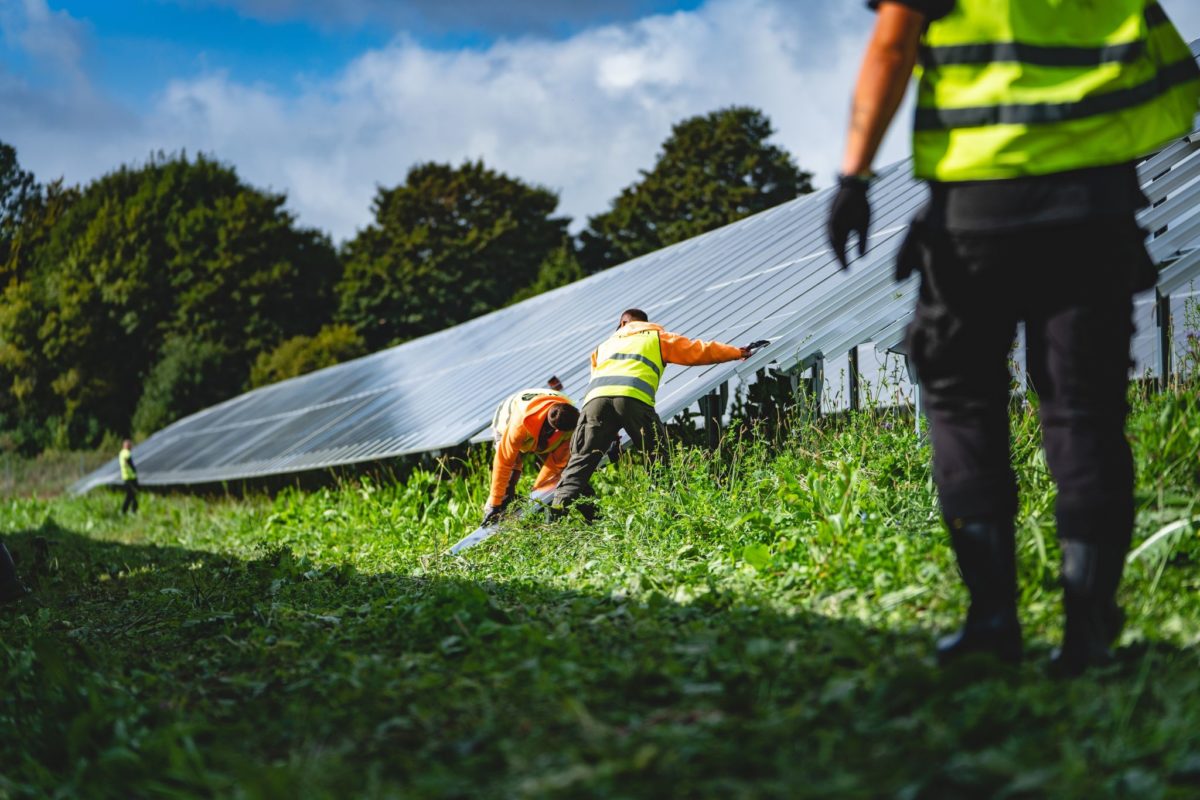The solar sector can allow itself to be excited by these new proposals from the European Commission. The distinct role of “renewable” hydrogen is secured with a new definition of “low-carbon” hydrogen, while proposals to create an open and integrated hydrogen market will empower consumers and ultimately support the development of renewable hydrogen. The boost for renewable hydrogen should further encourage the development of solar and wider renewables.
In a clear benefit for solar, the EPBDII is set to support the deployment of on-site solar and storage during building renovations. Following the policy’s adoption, after negotiation through the European Parliament and European Council, newly suggested building standards are also set to favor the installation of decentralized energy resources in new buildings – notably through a zero-emission building standard. In a constructive step, we can expect a European framework to accelerate the renovation of the worst-performing buildings, with a view to reaching a zero-emission building stock by 2050. A new European-wide common template for Energy Performance Certificates should harmonize different member state approaches to energy frameworks but ultimately could do more to value the role of distributed energy sources like residential or SME solar installations. Let’s not forget that more than 90% of roofs in the EU go unused today when they could support the fight against climate change with solar installations.
Urban Solar
 Buildings are key to our daily lives and significantly impact our health and wellbeing. The majority also have substantial carbon footprints, employing heavy use of fossil fuels across their lifetimes, from their construction, use, and demolition phases. In Q4 2021, pv magazine’s UP Initiative focuses on the role solar and energy storage can play in greening the world’s urban spaces. Read our Urban Solar coverage
Buildings are key to our daily lives and significantly impact our health and wellbeing. The majority also have substantial carbon footprints, employing heavy use of fossil fuels across their lifetimes, from their construction, use, and demolition phases. In Q4 2021, pv magazine’s UP Initiative focuses on the role solar and energy storage can play in greening the world’s urban spaces. Read our Urban Solar coverageThe European Commission’s proposals on Dec. 15 came only a few hours before SolarPower Europe published its latest EU Market Outlook for Solar Power 2021-25. In stellar news, the report revealed yet another banner year for European solar – smashing 2020’s installation levels with 34% growth, equating to 25.9GW additional solar capacity for the EU. This makes 2021 the best year yet for European solar – topping a decade-long installation record from 2011. While we celebrate, we must learn from our successes and accelerate our ambitions to keep global warming below 1.5 degrees Celsius.
A reason to act
More and more EU member states are reaching (or returning to) GW-scale annual installation levels for solar. At least two member states – Estonia and Lithuania – have already hit their National Energy and Climate Energy solar targets, with Poland, Ireland and Sweden expected to do so through 2022 – well before their 2030 deadline. In 2021, all but two of the EU27 countries grew their solar capacities more than the year before. The forecast is brighter than even the most optimistic predictions could have hoped for a few years ago – in just the most-likely Medium Scenario, the cumulative capacity of the EU solar fleet will double within four years, up to 327.6GW by 2025, and on to 672GW by 2030. We have more than reason to hope, we have a responsibility to act, and level up EU solar ambitions.
In anticipation of record-breaking solar figures in our EU Market Outlook, and more proof than ever that solar can drive the renewable transition, SolarPower Europe has launched the Yes to 45% RES campaign. Supported by eight energy and city associations, and endorsed by increasing numbers of leading scientists – including contributors to the IPCC’s recent climate crisis report – the campaign calls for the European Institutions to level up their renewables target to a minimum 45% goal for 2030. Research from global top-10 climate action institution, Lappeenranta-Lahti University of Technology, finds that a minimum 45% EU renewables target will set the continent on the most cost-efficient path to meet 2030 climate goals, and limit dangerous warming beyond 1.5 ⁰C. Luxembourg Minister for Energy, Claude Turmes, has backed the campaign, noting the immense role rooftop solar can play in the commercial and industrial sector.
The European solar sector forecast is nothing but bright – cautious estimates already predict 672GW of solar installations by 2030. The necessary 45% renewables target requires 870GW cumulative capacity. With the increasing support of policymakers, and the redevelopment of European solar manufacturing (check out our new Solar PV Manufacturing Map within our EU Market Outlook), we can get there.
In 2022, the European Commission will continue its negotiations with its co-legislators on the EPDBII file, and the revised, target-setting, Renewable Energy Directive (REDIII). Through these legislative proposals, we must not miss the opportunity for solar to decarbonize European buildings or set the necessary renewables' targets we need to protect the planet. SolarPower Europe is charged and ready to work on these files and take the continent to a brighter future in 2022.
About the author

Walburga is the CEO of SolarPower Europe. She is responsible for the overall performance of the association. Her previous experience includes her roles as Head of the EU Representation Office at VERBUND for nine years; Advisor of Financial and Capital Markets at The Association of German Public Banks and Association of Public Banks (VÖB / EAPB); Competition lawyer at Haarmann Hemmelrath; A Parliamentary Assistant to Austrian MEP and experience in the DG Competition Merger Control Task Force. Walburga has also been a Board Member of Hydrogen Europe. Walburga holds a degree in Law and Business Administration from Leopold-Franzens Universität Innsbruck. She speaks German, English, Dutch and French.
The views and opinions expressed in this article are the author’s own, and do not necessarily reflect those held by pv magazine.
This content is protected by copyright and may not be reused. If you want to cooperate with us and would like to reuse some of our content, please contact: editors@pv-magazine.com.



By submitting this form you agree to pv magazine using your data for the purposes of publishing your comment.
Your personal data will only be disclosed or otherwise transmitted to third parties for the purposes of spam filtering or if this is necessary for technical maintenance of the website. Any other transfer to third parties will not take place unless this is justified on the basis of applicable data protection regulations or if pv magazine is legally obliged to do so.
You may revoke this consent at any time with effect for the future, in which case your personal data will be deleted immediately. Otherwise, your data will be deleted if pv magazine has processed your request or the purpose of data storage is fulfilled.
Further information on data privacy can be found in our Data Protection Policy.